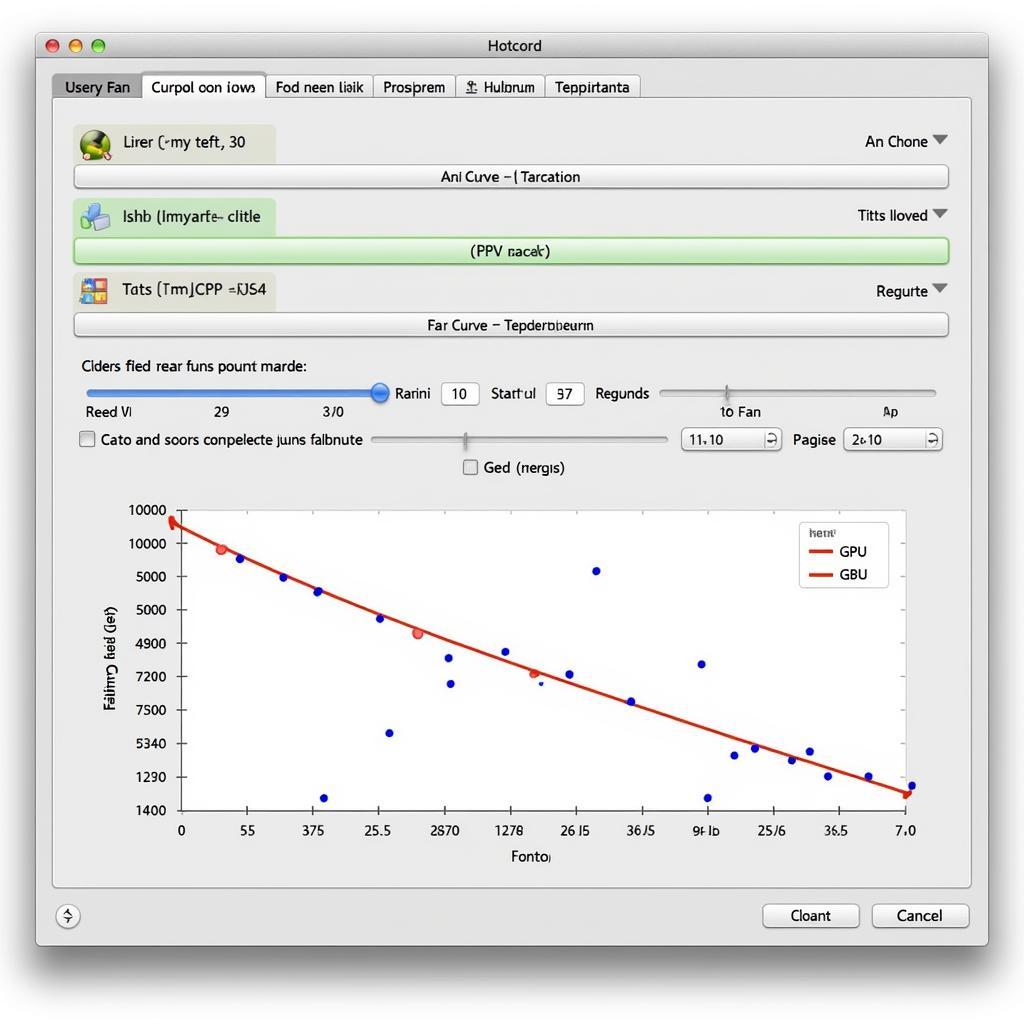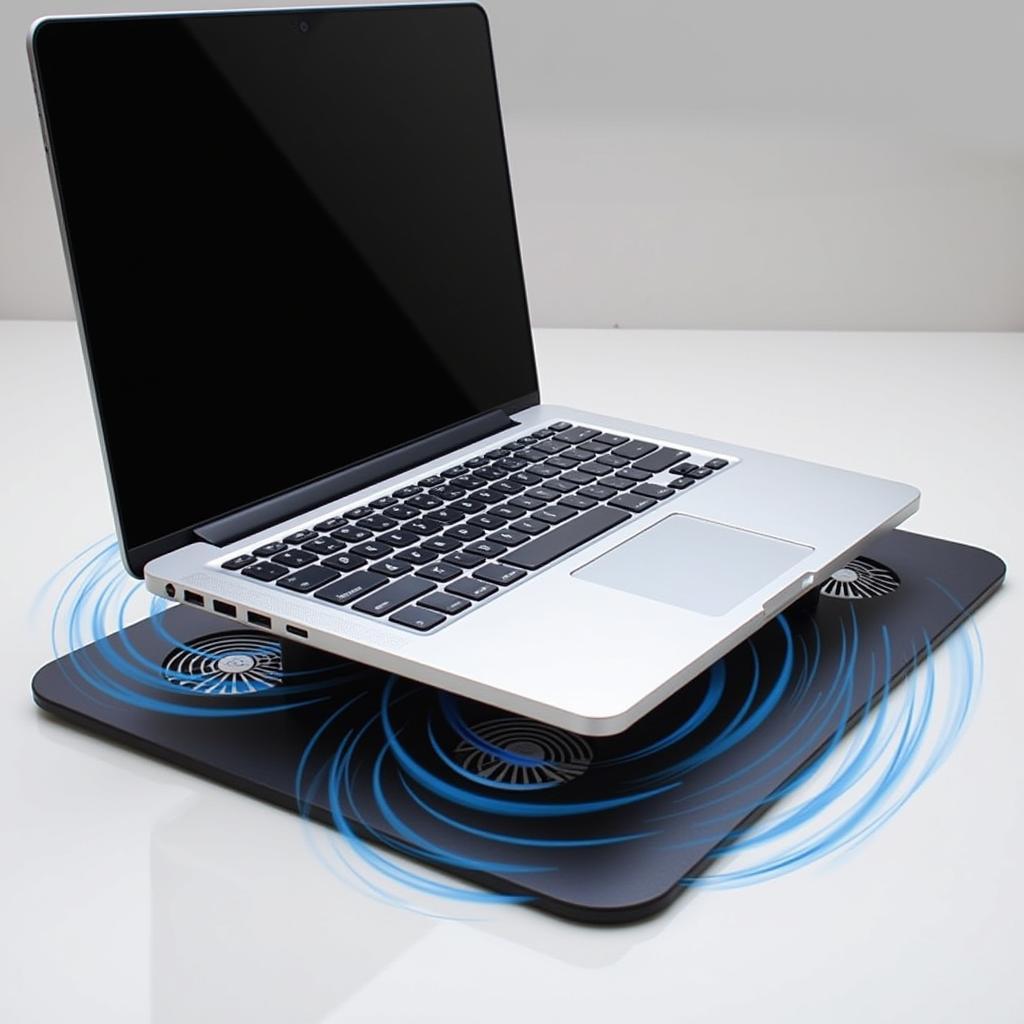Turning on your laptop fan in Windows 10 isn’t as straightforward as flipping a switch. Unlike desktop PCs, where fans are often directly connected to the power supply, laptop fans are controlled by the system’s BIOS and operating system based on temperature and workload. This guide will explore how to effectively manage your laptop’s fan speed in Windows 10 and address common issues related to fan control.
While you can’t directly “turn on” the laptop fan in the same way you might turn on a light, you can influence its behavior. This involves understanding how your laptop’s cooling system works and utilizing software tools to adjust fan curves and profiles. Let’s delve into the specifics of how to optimize your laptop’s cooling performance. If your laptop won’t boot and the fan isn’t running, it might be a more serious hardware issue. See our guide on laptop won’t boot fan.
Understanding Laptop Fan Control
Laptop fans are designed to automatically adjust their speed based on the system’s temperature. The BIOS sets the baseline fan curve, which dictates the fan speed at various temperature thresholds. Windows 10 then interacts with the BIOS to further refine fan control based on real-time system load.
Accessing BIOS Settings
Accessing the BIOS settings can sometimes allow for basic fan control adjustments. However, these options are often limited and should be approached with caution. Incorrect BIOS configurations can lead to system instability.
Utilizing Third-Party Software
The most effective way to control your laptop fan in Windows 10 is through third-party software. These utilities provide a user-friendly interface for monitoring temperatures and customizing fan curves. Popular options include SpeedFan and Argus Monitor. These programs allow you to set specific fan speeds at different temperature ranges, giving you greater control over your laptop’s cooling performance.
 Adjusting fan curve in Windows 10 using third-party software.
Adjusting fan curve in Windows 10 using third-party software.
Troubleshooting Common Fan Issues
Several issues can arise with laptop fans. Understanding these issues and their solutions is crucial for maintaining optimal system performance and preventing overheating.
Why is My Laptop Fan So Loud?
A loud fan often indicates that the CPU is working hard and generating excessive heat. This can be caused by demanding applications, background processes, or even malware. Closing unnecessary programs and scanning for malware can often resolve this issue.
Laptop Fan Not Working
A non-functional fan is a serious problem that can quickly lead to overheating and system damage. This could be due to a hardware failure or a software glitch. If your fn fan keys dont work, you might need to troubleshoot your keyboard or use external software to control fan speed.
Overheating Issues
If your laptop consistently overheats, even with the fan running, it could indicate a more serious problem, such as a clogged heatsink or dried-out thermal paste.
“Regularly cleaning your laptop’s vents and ensuring proper airflow is essential for preventing overheating,” advises John Smith, a Senior Hardware Technician at Tech Solutions Inc.
How to Manually Increase Fan Speed on Asus Laptops
Some Asus laptops offer built-in utilities or BIOS settings for adjusting fan profiles. See our guide on cpu fan profile asus for more details. Understanding what ACPI fan is can also be helpful for troubleshooting fan-related issues. For more information, check out our guide on acpi fan la gi.
Conclusion
While you can’t directly “turn on” your laptop fan in Windows 10, you can manage its behavior and optimize cooling performance. Using third-party software offers the most control, allowing you to customize fan curves and monitor system temperatures. Addressing common fan issues and maintaining proper airflow are crucial for preventing overheating and ensuring long-term system stability. Remember, a properly functioning cooling system is essential for your laptop’s health and performance. Understanding How To Turn On Laptop Fan Windows 10 effectively is crucial for maintaining optimal performance.
 Using a laptop cooling pad for better airflow and temperature management.
Using a laptop cooling pad for better airflow and temperature management.
FAQ
- Can I manually control my laptop fan? Yes, you can use third-party software to adjust fan curves.
- Why is my laptop fan always running? Consistent fan activity might indicate high CPU usage or overheating.
- How do I fix a loud laptop fan? Try closing unnecessary programs, scanning for malware, and cleaning your laptop’s vents.
- What should I do if my laptop fan isn’t working? A non-functional fan requires immediate attention. Contact a qualified technician for repair.
- How can I prevent my laptop from overheating? Ensure proper airflow, use a cooling pad, and monitor system temperatures.
- Is it safe to adjust fan settings in the BIOS? Proceed with caution, as incorrect BIOS configurations can cause system instability.
- What are some recommended third-party fan control software? SpeedFan and Argus Monitor are popular choices.
“Addressing laptop fan issues promptly is crucial to prevent long-term damage,” advises Maria Garcia, a hardware specialist at Computer Repair Experts. If you’re experiencing fan problems with your HP laptop during startup, you can refer to our article on loi fan khoi dong may hp.
For further assistance, please contact us at Phone Number: 0903426737, Email: fansbongda@gmail.com or visit our address: To 9, Khu 6, Phuong Gieng Day, Thanh Pho Ha Long, Gieng Day, Ha Long, Quang Ninh, Vietnam. We have a 24/7 customer support team.


